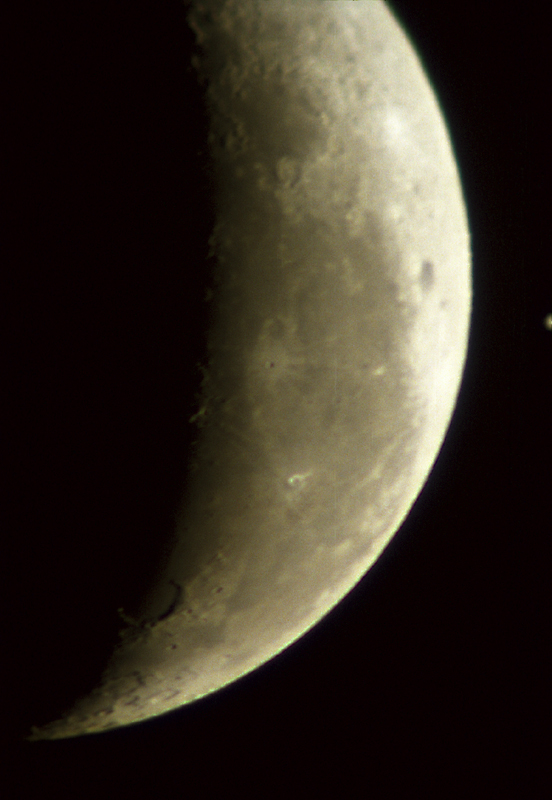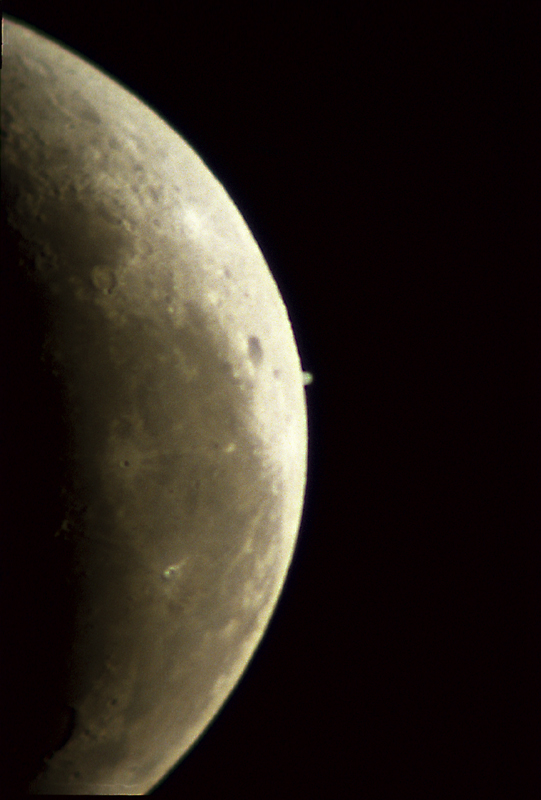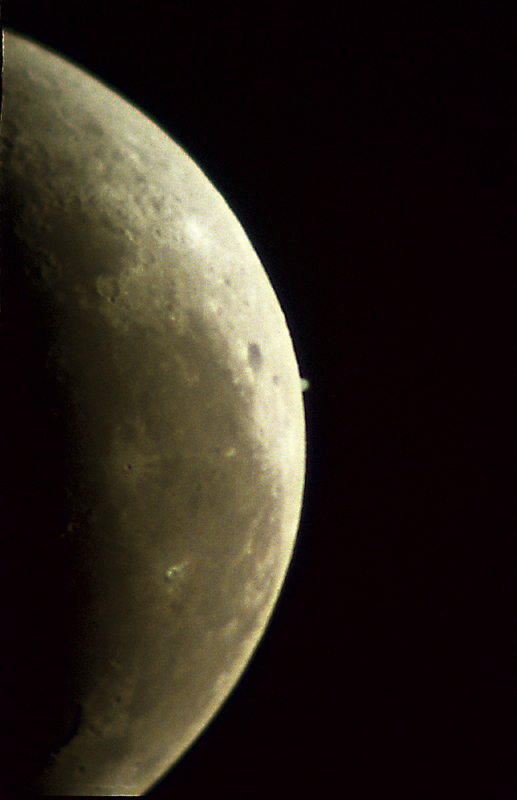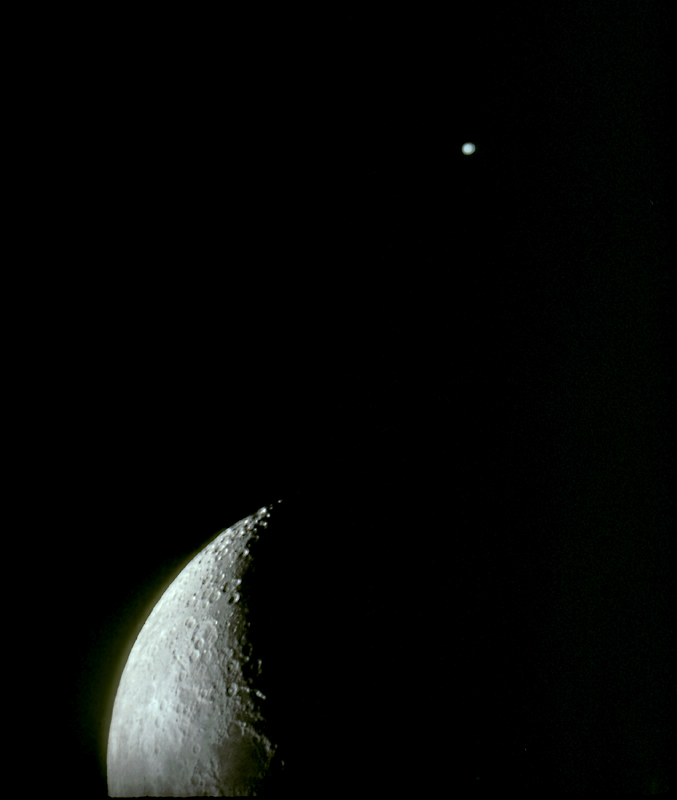
1/15 second exposure, Kodak Kodachrome 100 slide film.
5" f/5 refractor plus 6mm eyepiece.
Occultations of planets by the Moon are always a facinating sight, especially when the disappearence takes place at the unlit lunar limb. When that happens, the planet seems to be getting slowly swallowed by nothing. With the introduction of webcams and digital cameras to astronomy over recent times, some observers are obtaining spectacular images of planets during occultations, such as during the occultation of Mars in 2003. However all of my images come from a much less technological era and so do not show anything like those more recent and technologically advanced images do.
In 1978, there was a report that there would be a grazing occultation of Jupiter across Western Australia. With eager anticipation a group of friends and I journeyed to the predicted location and set up to observe. However what we saw was Jupiter glide slowly past the Moon without being occulted! As we found out later, we were given the wrong location. We were told 10 km north east of a particular location, when in fact the graze path was 100 km north east of that location!!!! Since this event happened at around 1.00am and had involved a journey of around 170km, there was a bunch of very frustrated observers that night!!

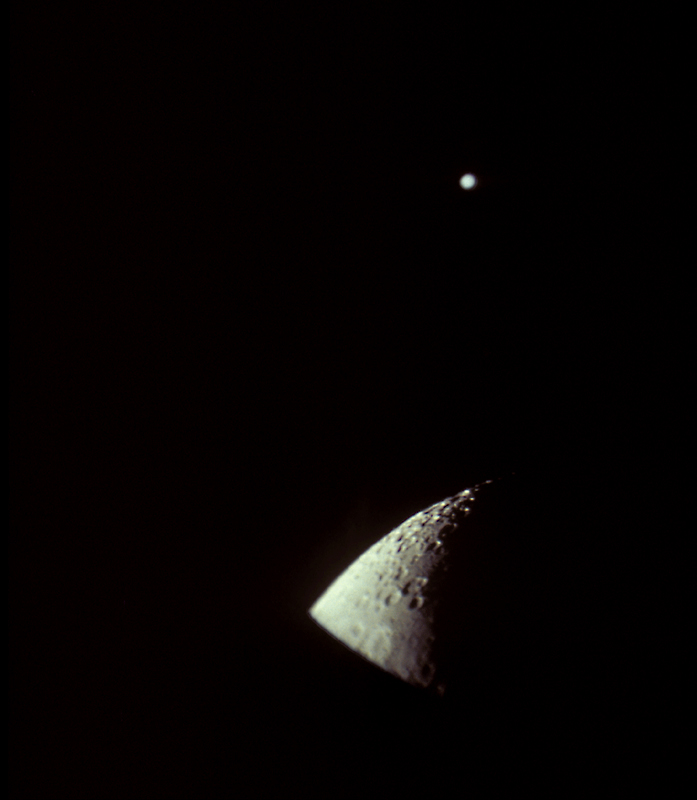
In 1983 Saturn was occultated by the waxing Moon at a time that was well placed for viewing from Western Australia. I eagerly awaited this event as I had not seen a Saturn occultation before. The night was very clear although cold, but just as the planet was about to disappear, I noticed that there was a strange glow. I looked away from the telescope to see flames shooting out of the chimney. My wife had stoked the fire up too much. I quickly threw her the hose and told her to wet the chimney while I went back and photographed Saturn disappearing behind the Moon. Have to keep the priorities right....right? Once the occultation was over, I climbed onto the roof and finished putting the fire out. I missed reappearence due to a small cloud. Below is the only surviving photograph I have of that event. In it, Saturn is just about to disappear behind the Moon. The large, elongated crater is Struve.

In 1985 I was able to observe and photograph an occultation of Mars. Although the Moon was close to full, it was still facinating to watch both the disappearence and reappearence. In the first three photographs, Mars disappears behind the bright western limb of the Moon.
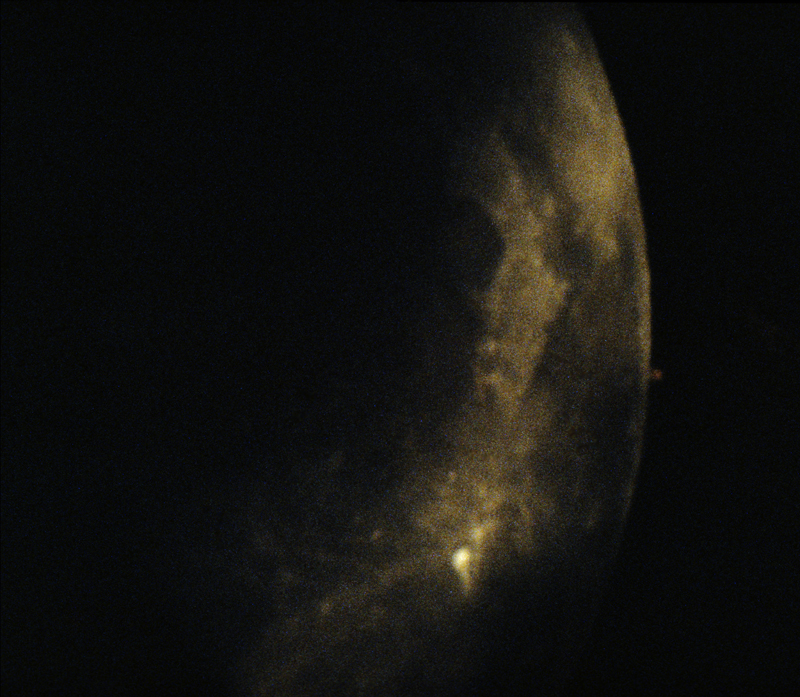
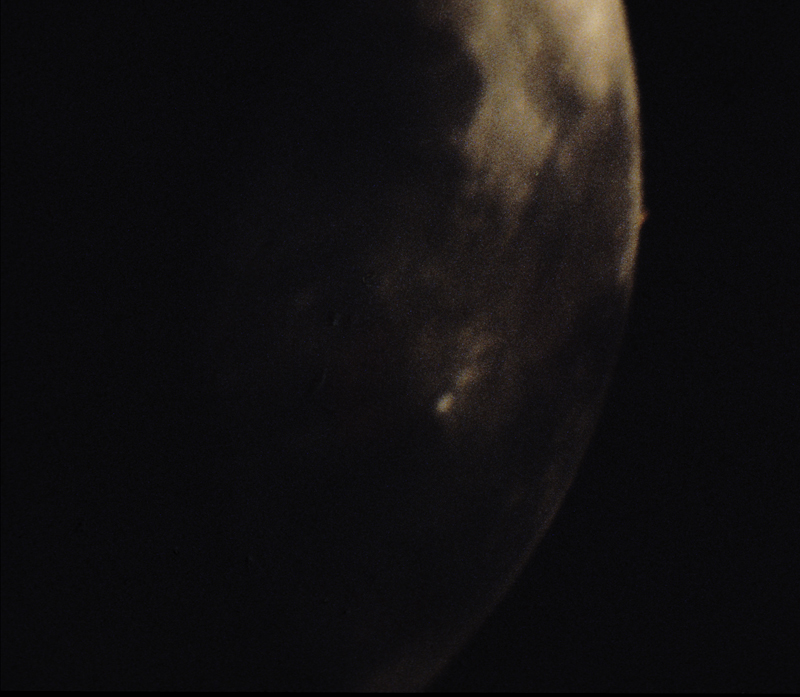
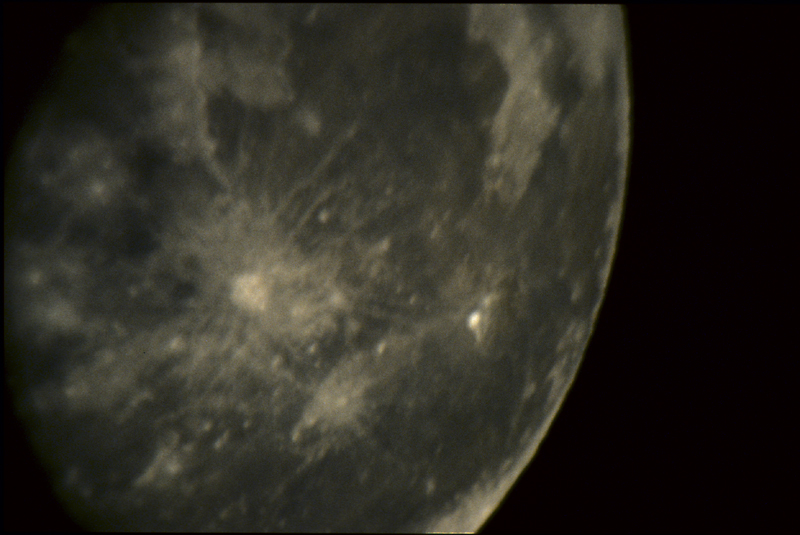
These next three images show the reappearence of Mars from behind the Moon. The dark floored crater near Mars is Endymion.
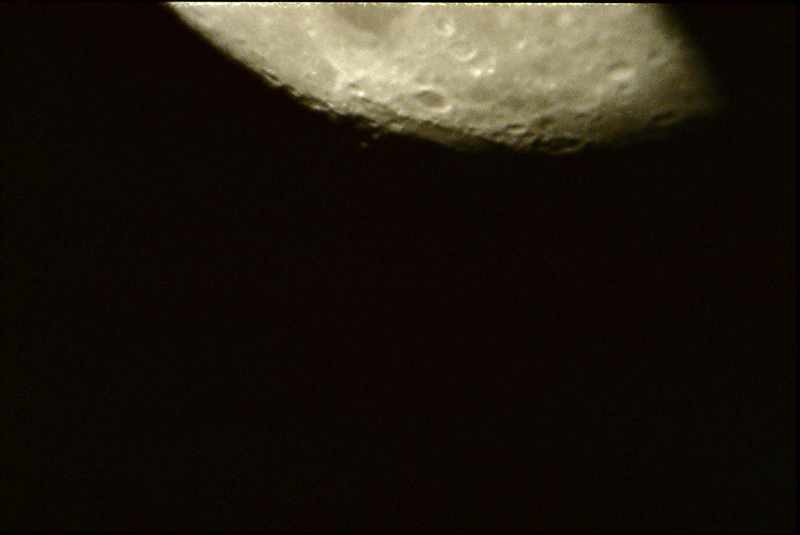
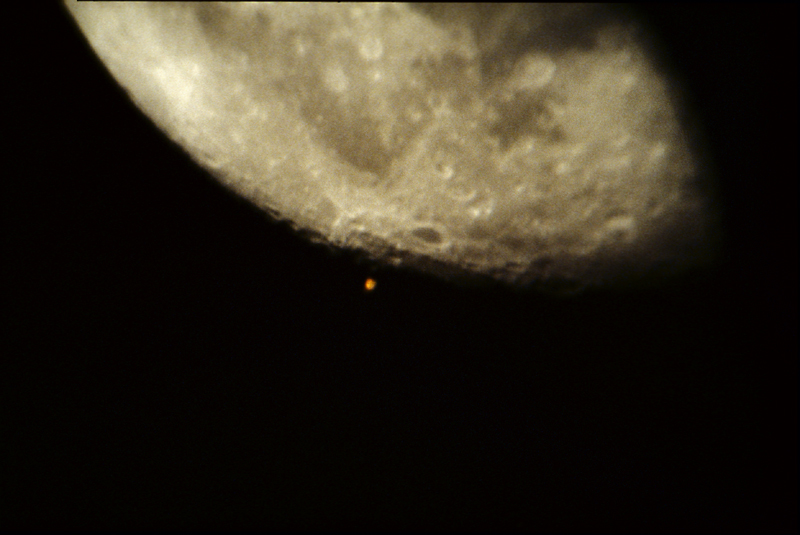
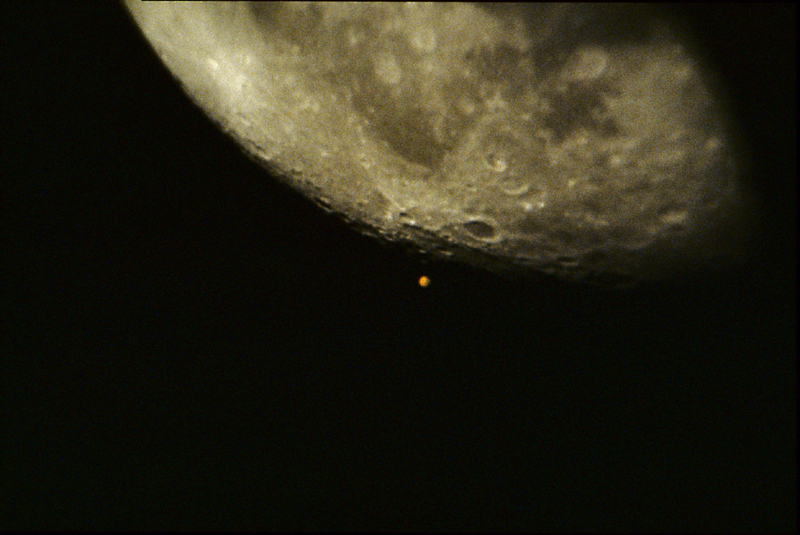
During June 1998, Jupiter was again occulted by the Moon. This event happened shortly before dawn with disappearence on the sunlit limb. Reappearence was not visible before sunrise.
